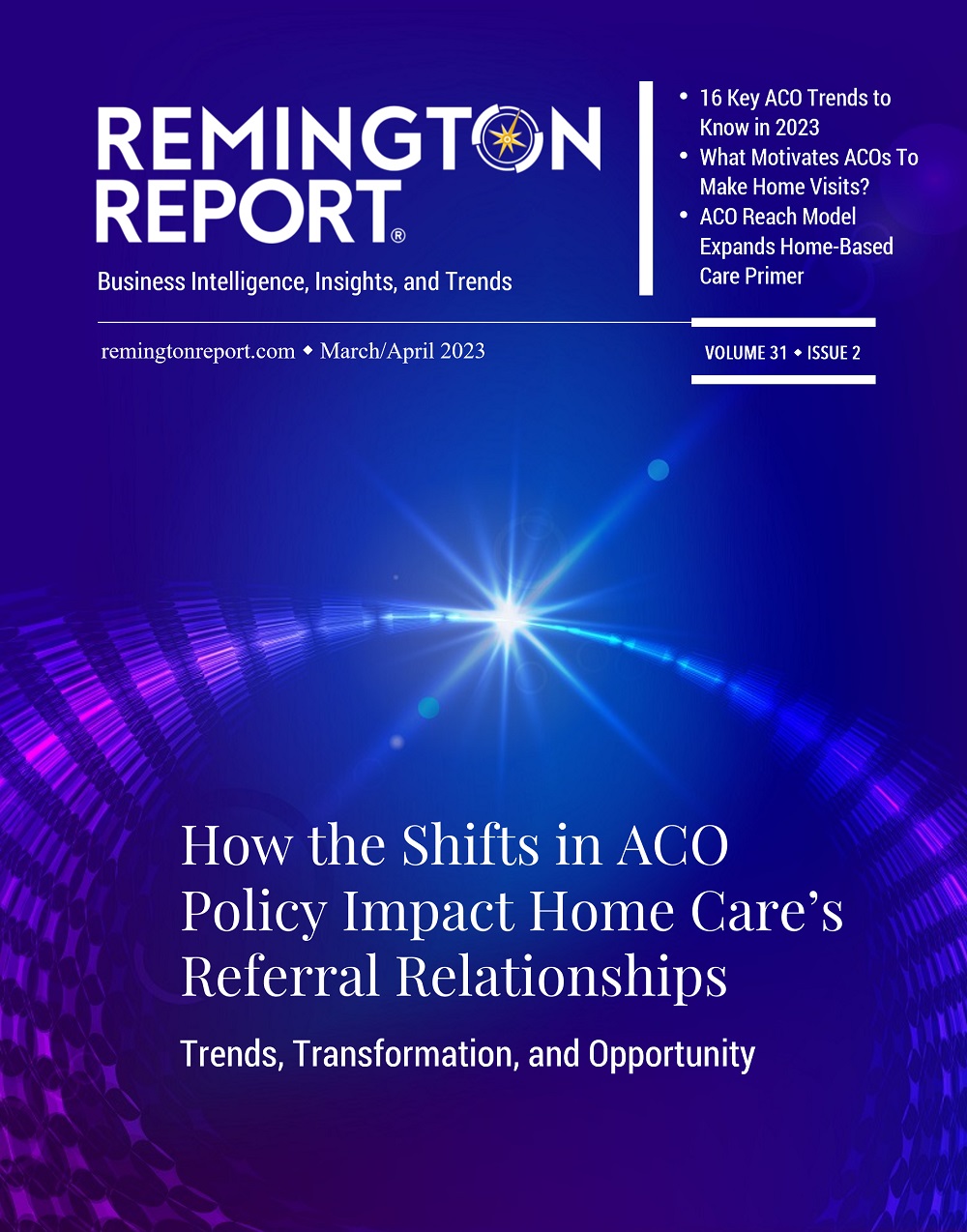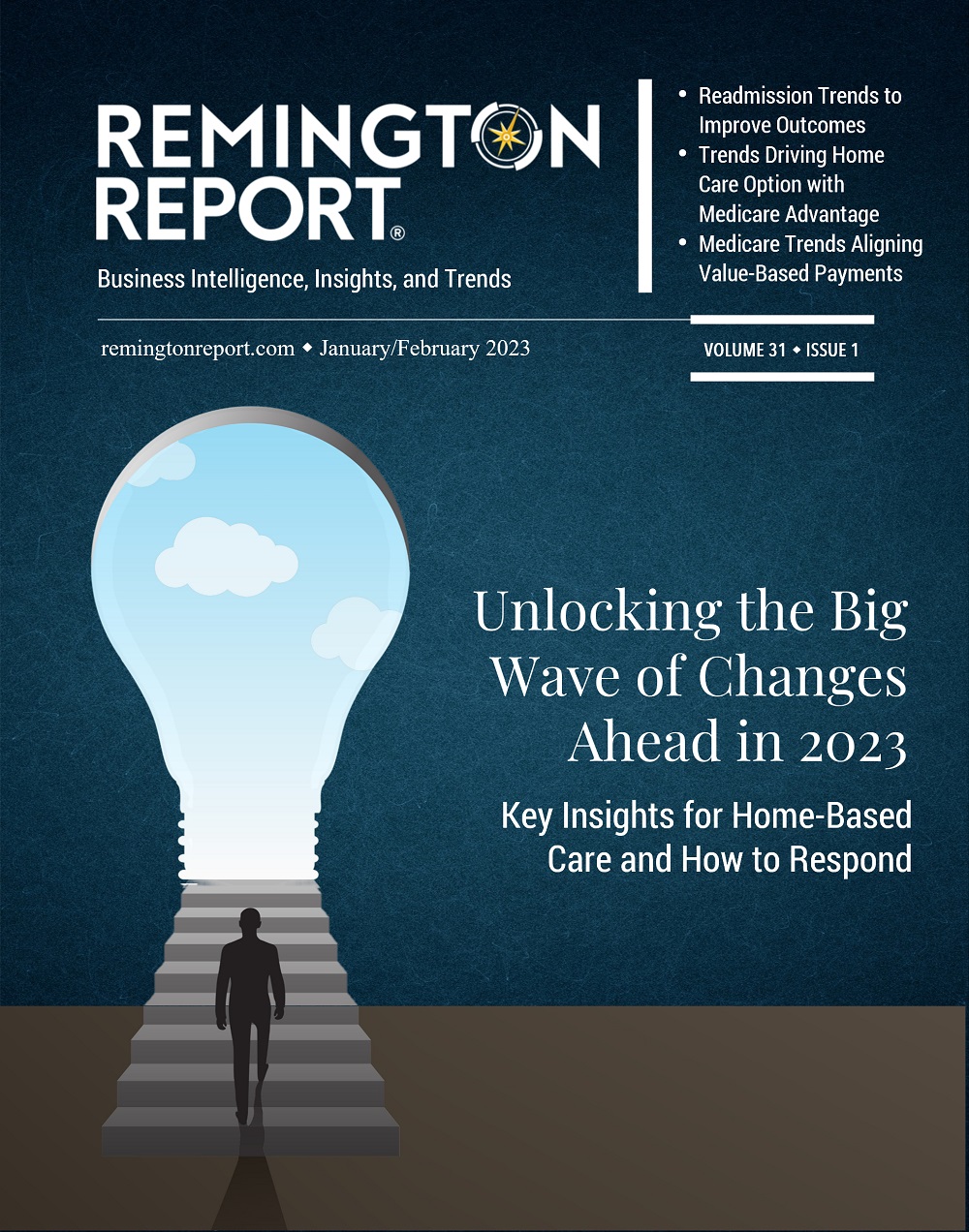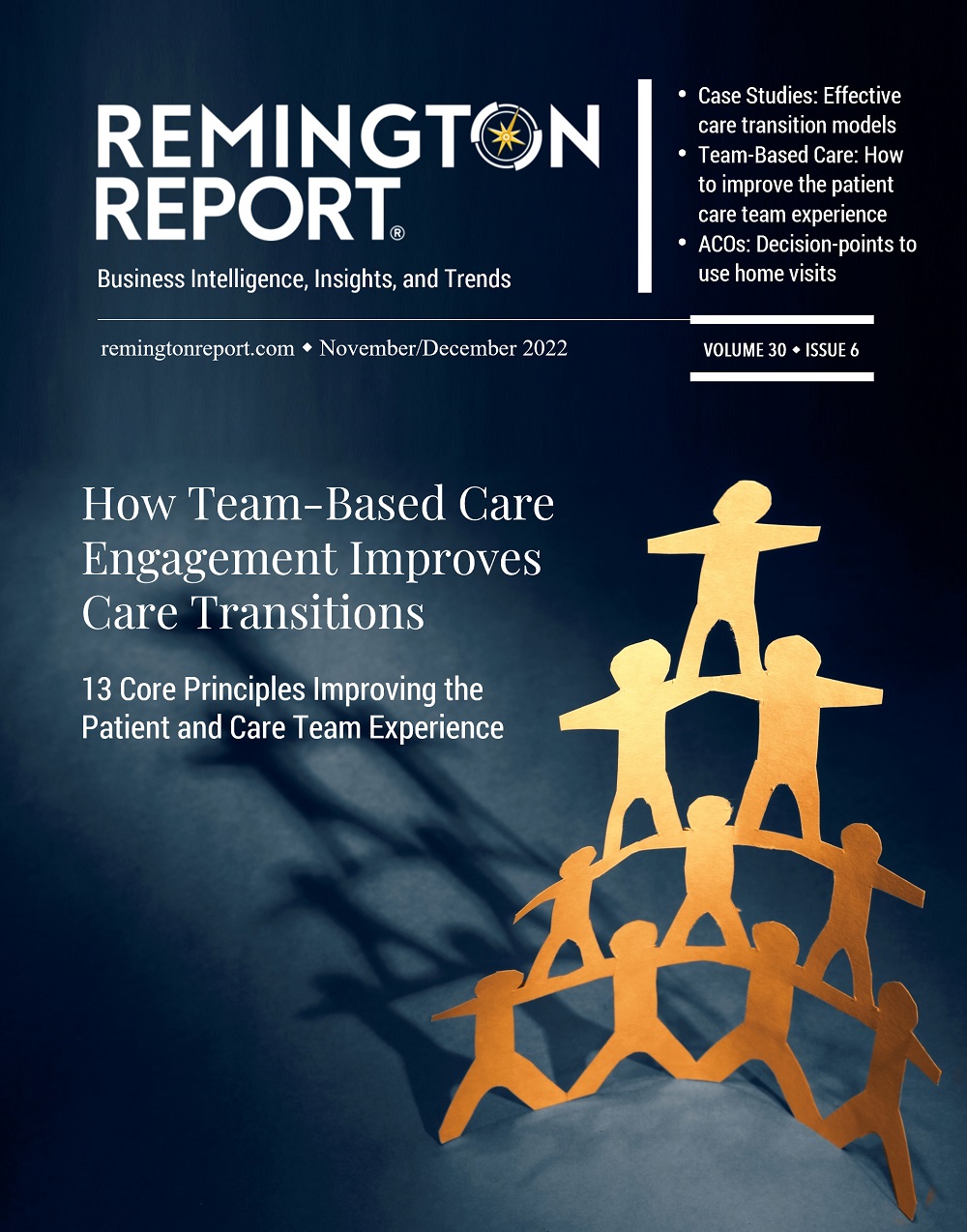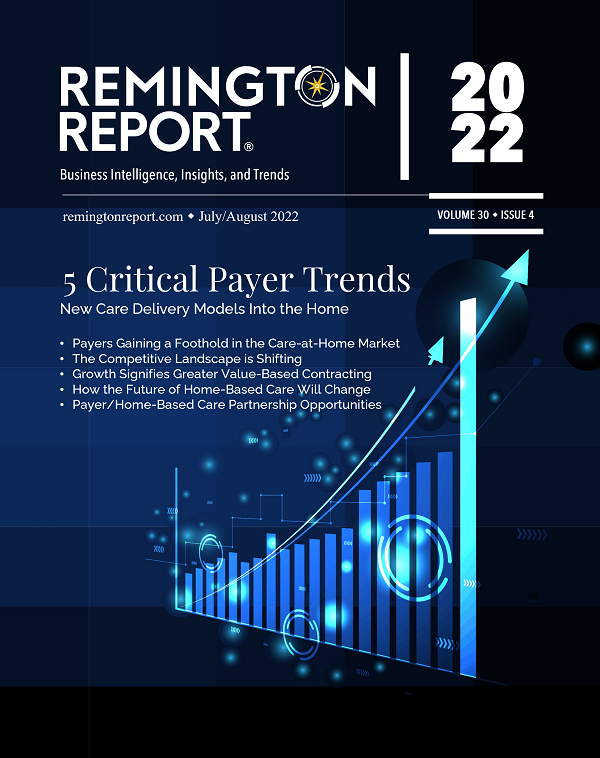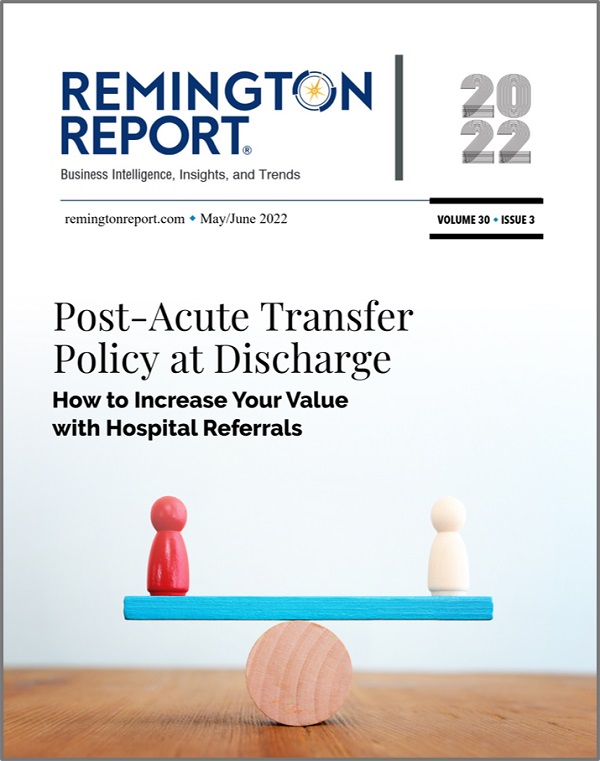Payers and providers are redefining and rethinking how new models of care can move the needle toward value-based care. Learn about recent examples.
1. Bundled Payment Pilot for Knee and Hip Replacements
BlueCross BlueShield of Michigan has recently launched a pilot program that will use bundled payments for knee and hip replacements in order to manage costs and improve member outcomes. Designed to cover both the surgery and 90-days of post-surgery care, the bundles are estimated to save 10 percent of the average cost of such care episodes.
BCBS data suggests that knee and hip replacements typically cost anywhere between $28k-$55k—representing a significant variation across hospitals and geographies. The test program is a relatively good size, covering surgeries in nine Michigan counties and accounting for nearly a third of hip and knee procedures performed. All in all, a total of sixty-four surgeons across seven different health systems will receive bundled payments as reimbursements for these episodes of care.
2. Payer: Aggressively Pursuing Value-Based Payments
UnitedHealth Group, the nation’s largest health insurance company, says it’s paying nearly 60% of its reimbursements – or $64 billion – via value-based care models that are rapidly replacing fee-for-service medicine in the U.S.
- Nearly 60% of the insurer’s $130 billion in annual medical spending is vis value-based models
- 90 million in bonuses were paid to Medicare physicians for improve quality and better care
One in three UnitedHealth plan enrollees now receive medical care from medical care providers who are paid via these alternative models.
“We estimate that by the end of 2020, we will have $75 billion of our payments to care providers tied to value based care relationships,” UnitedHealth Group said.
“There is no turning back to an unsustainable system that pays for procedures rather than value,” Azar said at a Federation of American Hospital’s policy conference. “This administration and this president are not interested in incremental steps. We are unafraid of disrupting existing arrangements simply because they’re backed by powerful special interests. The transition value is moving forward; if you aren’t already preparing for it, it is time to get on-board.”
HHS Secretary Alex Azar
3. Health Plans Standardizing ACO Performance Measures
Four of California’s largest health plans — Aetna Inc., Anthem Blue Cross, Blue Shield of California and Health Net, Inc. — have joined an effort in that state to standardize performance measures for commercial accountable care organizations (ACOs).
The initiative will be launched this year by the Integrated Healthcare Association (IHA) and the Pacific Business Group on Health (PBGH). The groups hope to make the ACO standards a national model.
“The goal of the IHA-PBGH partnership is to develop and implement a standard quality and cost performance measure set for commercial ACOs that meets the needs of participating purchasers, health plans and providers to improve care while advancing national efforts for coordinated, meaningful performance measurement,” the groups said.
The group’s “2016 to 2021 Value Based P4P Measure Set Strategy” lists several tactics to be used in developing the new ACO measures, including:
- Working diligently to align the measure set with others,particularly the Medicare Access and CHIP Reauthorization Act of 2015 (MACRA), the federal Quality Rating System for Covered California, and NCQA’s health plan accreditation measures;
- Documenting and communicating the rationale where measures diverge; and
- Managing the risk of measure fatigueby aligning measure specifications with the measure developer’s specifications whenever possible.
The groups said they plan to launch the initiative with 18 total clinical quality, hospital utilization and cost measures for care provided in 2017. The measures cover recommended cancer screenings, comprehensive diabetes care and emergency department visits “to the total cost of care per enrollee.” More measures will be added in the future to bring the total up to 35 measures.
According to IHA and PBGH, purchasers endorsing the initiative include: The Boeing Company, The California Public Employees’ Retirement System, Covered California and Google. Provider supporters include Cedars-Sinai Medical Center, Brown & Toland Physicians and NAMM California (a unit of UnitedHealth Group’s Optum subsidiary).
4. Home Hospital Model Saves Money
A pilot study by investigators at Brigham and Women’s Hospital represents the first randomized, controlled clinical trial to test the home hospital model in the U.S. and examined the model’s impact on direct cost, along with utilization, safety, quality and patient experience.
The study, “Hospital-Level Care at Home for Acutely Ill Adults: a Pilot Randomized Controlled Trial,” included adults with any infection or exacerbation of heart failure, chronic obstructive pulmonary disease, or asthma who were admitted via the ED at either Brigham and Women’s Hospital or Brigham and Women’s Faulkner Hospital. The patients also had to live in the hospital’s surrounding area.
Nine patients received their care at home, while 11 patients in a control group received the usual care in the traditional inpatient hospital. All patients were interviewed on admission, at discharge, and 30 days after discharge.
The patients who were cared for at home received a daily visit from an attending general internist and two daily visits from a home health registered nurse from Partners Healthcare at Home. The model also offered 24-hour physician coverage and continuous monitoring, texting and video.
The results specifically were as follows:
- The median direct cost of the acute care episode for home patients was 52% lower for home patients than for control patients
- Home patients also had fewer laboratory orders (median per admission: 6 vs. 19) and less often received consultations (0% vs. 27%).
- “Home patients were more physically active (median minutes, 209 vs. 78), with a trend toward more sleep,” the study said.
- No adverse events occurred among the home patients, whereas one occurred among the control patients.
- The median direct cost for the acute care plus 30-day post discharge period for home patients was 67% lower, with trends toward less use of homecare services (22% vs. 55%) and fewer readmissions (11% vs. 36%).
5. ED and Community-Based Program Team Approach
High utilizers of hospital emergency departments are a complex problem. A study published in Health Affairs evaluated Bridges to Care (B2C), an ED-initiated community-based program. The program was led by Rutgers University Center for State Health Policy and developed collaboration with four Colorado stakeholders including an urban academic hospital, a network of 13 local federally qualified health centers, a mental health clinic and a community advocacy organization.
The B2C program targeted Medicaid-eligible high ED users, defined as adults who had two or more ED visits or hospital admissions within the last 180 days.
These patients got a personally tailored, 60-day care plan that included housing help, refugee services, and access to transportation. They also got help applying for insurance and disability benefits, setting up medical appointments, and filling prescriptions, among other services.
During the six months after B2C enrollment, the participants had:
- 29.7% fewer ED visits
- 30% less hospitalizations
- 123% more primary care visits than the control subjects
The B2C intervention is that it combines active ED outreach with multidisciplinary, community-based services, including a care coordinator, a health coach, a behavioral health specialist, a community health worker, and frequent home visits.

Lisa Remington is widely recognized as one of the foremost futurists in the home care industry, focusing on healthcare trends and disruptive innovation. She serves as the president and publisher of the Remington Report magazine and is also the President of Remington’s Think Tank Strategy Institute. Lisa provides strategic advice and education to over 10,000 organizations, assisting them in developing transformative strategies for growth and their future implications. She closely monitors complex trends and forces of change to develop effective strategic approaches.



